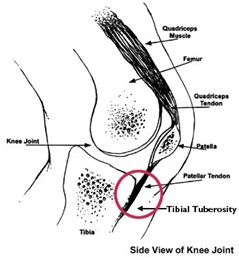How to Choose and Use a Backpack
Featured Expert
How to Choose and Use a Backpack
Backpacks are often an essential item for helping students carry their books and supplies to school. However, wearing a backpack improperly or carrying one that is too heavy can lead to injury. On this week’s On Call for All Kids, Gregory Hahn, M.D., a board-certified physician by the American Board of Orthopaedic Surgery who treats patients at Johns Hopkins All Children's Hospital, helps set your child up for school year success with these safe backpack tips.
When picking out a new backpack for your child, follow these tips on proper backpack selection and usage:
Choose a backpack with wide, padded shoulder straps.
Narrow straps can dig into shoulders, causing pain and restricting circulation. They are also less sturdy and more likely to rip after just a few weeks or months of use.
Look for padding.
The part of the pack that rests on your child’s back should be well padded. This adds comfort and provides protection from any sharp edges or objects inside the pack.
Select a backpack that is lightweight, but sturdy.
Look for strong zippers and tough nylon fabrics that will resist rips and tears without adding extra weight. Reflective fabric is a good idea, especially if your child will be walking, riding his or her bike or going to and from the bus stop.
Wheels may not be a good deal.
Before buying a backpack with wheels, think about whether they will be useful for your child’s school day. Some schools do not allow backpacks on wheels.
Make sure your child uses both shoulder straps.
Wearing a backpack on one shoulder may strain muscles. If child prefers a messenger-style bag, make sure they wear it across the body instead of on one shoulder.
Don’t overload the backpack.
A filled backpack shouldn’t weigh more than 10 pounds. Parents of younger students should clean out the backpack on a regular basis to see if there are unnecessary items adding to the backpack’s weight. Encourage teens to clean out their backpack from time to time, too.
Only carry items that are required for the day. Pack heavier items at the top and toward the front.
Keep the straps tight.
The bottom of the pack should fall 2 inches above the waist, and the pack should be relatively close to the body. Use the chest strap, if present, to take some of the load off the shoulder straps.
Bend at the knees.
Kids should bend using both knees when they are wearing a backpack. Bending over at the waist when wearing or lifting a relatively heavy backpack may strain back muscles.
Do not wear a backpack while riding in a car.
In the event of an accident, doing so could cause or intensify injury.
Backpacks are designed to distribute the weight of books and supplies across some of the body’s strongest muscles. However, children and teens who wear their backpack incorrectly or carry one that is too heavy are putting themselves at risk for injury. Muscles and joints may be damaged and lead to severe neck, back and shoulder pain.
Do not ignore any back pain in children or teens and encourage your student to tell you about any numbness, tingling, or discomfort in the arms or legs. This may indicate a backpack that is too heavy or does not fit well.
To check if your child’s backpack is too heavy, watch him or her put it on. If it’s a struggle and the pack seems too heavy, remove some of the books to carry in the child’s arms to ease the load. Encourage older students to make frequent locker stops during the day to drop off or switch out heavier books.
Above all, use common sense. You’re already giving your child the tools for success in school, so make sure he or she can carry them as well.
Gregory Hahn, M.D., is on the medical staff of Johns Hopkins All Children’s Hospital, Inc. (“JHACH”) but is an independent practitioner who is not an employee or agent of JHACH.







